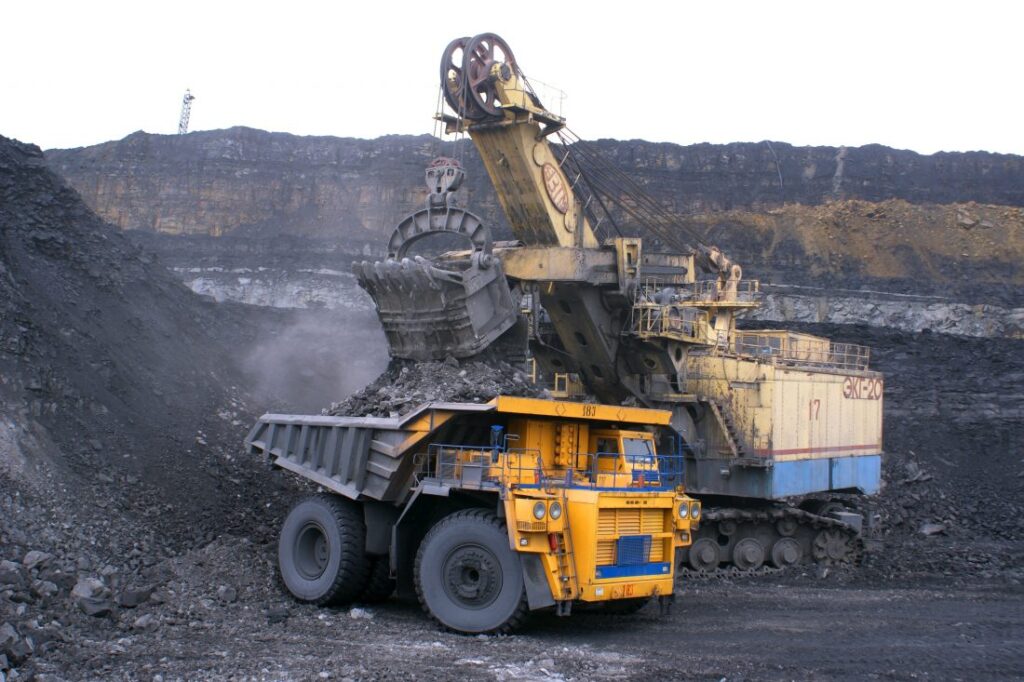Application
Mining and Oil Industries

Castings are essential to the mining and oil industries, where equipment and components are subjected to extreme conditions, including high wear, pressure, and temperature. Their durability, adaptability, and cost-effectiveness make castings a preferred choice for critical applications. Below are the key uses of castings in these industries:
1. Mining Equipment
- Crushers and Grinders: Castings are used for producing wear-resistant components such as crusher jaws, hammers, mantles, and concaves, which endure abrasive and high-impact conditions.
- Excavator and Loader Parts: Heavy-duty components like bucket teeth, arms, and frames are made from cast steel or iron for durability and strength.
- Conveyor Systems: Cast rollers, pulleys, and frames support the efficient transportation of ore and materials within mining sites.
- Drilling Equipment: Cast components like drill bits, stabilizers, and collars provide the necessary strength and wear resistance for drilling operations.
2. Material Handling Systems
- Chutes and Liners: Cast liners protect chutes and hoppers from abrasion during material transport, extending equipment lifespan.
- Trolleys and Rail Systems: Cast wheels and rail components ensure reliable performance in mining transport systems.
3. Pump and Valve Components
- Slurry Pumps: Cast pump casings and impellers handle abrasive slurry in mining operations, ensuring long-lasting performance.
- Valves and Fittings: Castings are widely used for valves, flanges, and fittings to manage the flow of fluids and gases in mining and oil extraction processes.
4. Oil and Gas Drilling
- Drill Bits and Heads: Cast steel and alloy drill bits are essential for penetrating hard rock and extracting oil and gas.
- Wellhead Components: Castings are used in wellhead components such as casing heads, spools, and blowout preventers, ensuring safety and durability under high-pressure conditions.
- Pump Jacks: Cast counterweights and structural parts in pump jacks provide balance and efficiency in extracting oil from wells.
5. Refining and Processing
- Heat-Resistant Components: Castings are used in furnace grates, retorts, and heat exchangers in refineries, where high-temperature resistance is critical.
- Catalyst Beds and Supports: Castings in refining equipment provide structural stability for catalytic processes in oil refining.
6. Offshore Platforms and Subsea Equipment
- Structural Components: Castings are employed in offshore platforms for structural supports, riser bases, and mooring systems, ensuring resilience against harsh marine environments.
- Subsea Valves and Manifolds: Cast components ensure reliability and corrosion resistance in subsea oil and gas extraction systems.
7. Hydraulic and Pneumatic Systems
- Cylinders and Pistons: Castings are used in hydraulic cylinders and pistons for mining and drilling equipment, ensuring efficient performance under heavy loads.
- Pressure Vessels: Cast pressure vessel components withstand high-pressure fluids in both mining and oil extraction applications.
8. Transportation and Storage
- Pipeline Components: Castings are utilized for elbows, tees, and joints in pipelines transporting oil, gas, and slurry, offering strength and leak resistance.
- Tanks and Containers: Cast fittings and support structures are critical for tanks used in storing and transporting extracted resources.
9. Wear-Resistant Applications
- Grinding Media: Cast balls and rods are used in mills for grinding ores into fine particles in mining operations.
- Screens and Filters: Cast metal screens and filters ensure efficient separation of materials in both mining and refining processes.
10. Specialized Equipment
- Blowout Preventers (BOPs): In oil drilling, castings are used to manufacture BOPs, which are critical for controlling well pressure and preventing blowouts.
- Muck Cars and Skips: Castings in mining transportation systems, such as muck cars and skips, handle heavy loads and resist abrasion.
